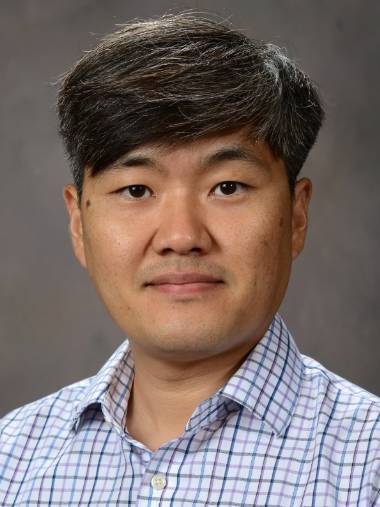Jung Earns CAREER Award for Work in Engineering, Testing Designer Proteins
March 22, 2021
 BATON ROUGE, LA – Assistant Professor of Biological Engineering Philip Jung has received
the National Science Foundation CAREER Award for his project, “Engineering Laminin
Globular Domains for Accelerated Cardiomyocyte Proliferation: Validation With a 3D-Bioprinted
In Vitro Infarct Model.”
BATON ROUGE, LA – Assistant Professor of Biological Engineering Philip Jung has received
the National Science Foundation CAREER Award for his project, “Engineering Laminin
Globular Domains for Accelerated Cardiomyocyte Proliferation: Validation With a 3D-Bioprinted
In Vitro Infarct Model.”
The award is for $442,451 and extends until March 2026.
Jung’s project aims to engineer designer proteins to stimulate the proliferation of cardiomyocytes, or cardiac muscle cells, which aid in recovery after myocardial infarction, or heart attack. The heart contains 2-3 billion cardiac muscle cells, which account for less than a third of the total cell number in the left ventricle, alone—and if there is any critical damage to the heart resulting in the loss of those cells, there is no way to get them back.
“If we can figure out any single way to increase the proliferation of cardiomyocytes, even at a small scale, that would be significant help for patients suffering from heart failure,” Jung said. “Traditionally, cell and stem cell therapies have been attempted to replenish the lost cardiomyocytes. However, this comes with immune rejection at varying degrees.
“The new method I proposed here is to engineer the native protein (called the extracellular matrix) to stimulate the proliferation of cardiomyocytes. If successful, we may have another strategy to grow more cardiomyocytes without the complication of preparing cells, potentially avoiding immunological rejection.”
The other main aspect of the project, once a pool of computationally-generated chimeras is prepared, is to build machine-learning models to screen and select them. The current process can be costly and time-consuming. Jung’s project could change that.
“Creation, screening, and selection of chimeras take a lot of time and effort,” Jung said. “This is very challenging, since the number we talk about [of chimeras] is millions to billions. This experiment has to be repeated multiple times. So, we want to save this time and effort significantly so that we can do molecular evaluation in our lab.
“Computationally-generated chimeras will be selected and screened with trained data. We are training the data with publicly available sequences. After this learning process, we will need to validate the performance of the engineered proteins…the idea in the proposal is to develop in vitro models (engineered cardiac tissue) with 3D bioprinting. We also propose to apply adaptive optimization to identify the best parameters of 3D bioprinting, scaffold biomaterials, and cardiac cells.”
Jung’s work will also make its way to local K-12 students and college undergraduates.
“For K-12 students, I am planning to show that tissue engineering is not science fiction anymore and one of the important strategies in modern medicine,” he said. “For undergraduate students, I already have two of my design-elective classes certified for the C-I (communication intensive) curriculum, where the final projects are to investigate tissue or stem cell bioengineering strategies for their favorite target tissue or organ throughout a semester.”
Like us on Facebook (@lsuengineering) or follow us on Twitter and Instagram (@lsuengineering).
###
Contact: Joshua Duplechain
Director of Communications